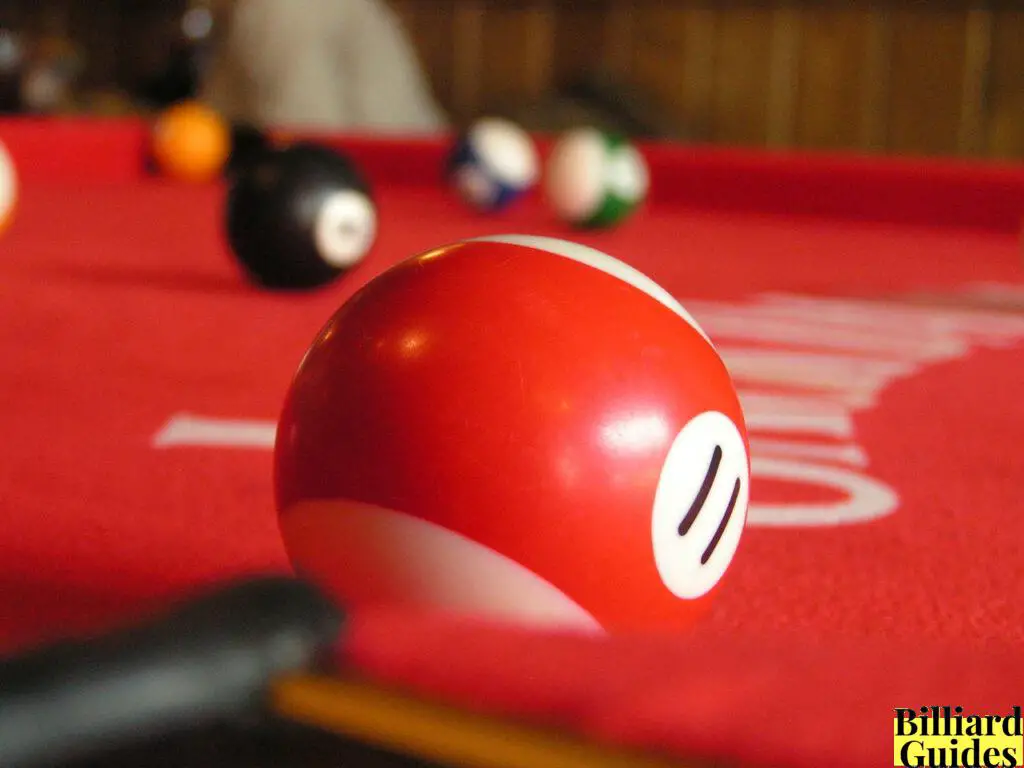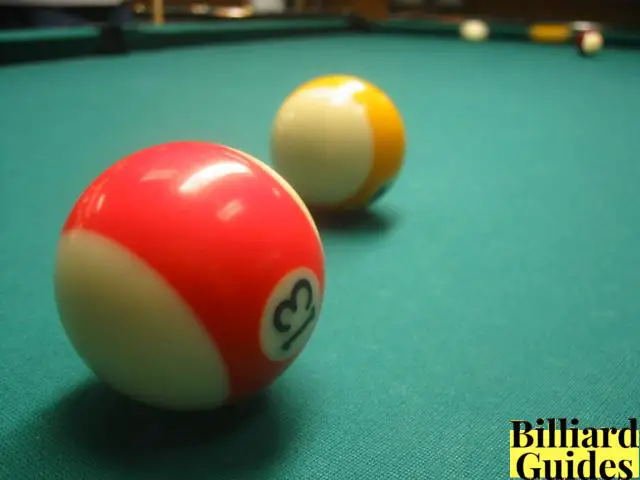The pool is a game of strategy and skill. But you can’t play it without a table, balls, and a cue stick.
And even if you have all that stuff, there’s still the chance that something will go wrong-a scratch, for example. A scratch in the pool happens when your cue ball doesn’t contact any object ball on your turn at the table.
It could happen because you hit one of the other balls or touched first on one of them before shooting.
Scratches are frustrating because they take away from your score and make games last longer than they should.
What is a scratch in pool?

A scratch in the pool is when you fail to contact any object ball with any part of your cue ball on your turn at the table.
You can commit a scratch by hitting one of the balls other than the one designated if you are shooting first or by touching first on a ball if someone else shoots first.
The scratches can happen for different reasons, but it is essential to determine the source of your scratching before altering your play style.
It is important to change up your betting strategy and make sure that you do not lose concentration like during a cut shot and forget about what is happening in the game.
8 Ball Pool Scratches

A scratch is when you fail to contact any object ball with any part of your cue ball on your turn at the table.
You can commit a scratch by hitting one of the balls other than the one designated if you are shooting first or by touching first on a ball if someone else shoots first.
The best way to avoid a scratch is to play defensively and try not to be too ambitious with your shots. Never shoot before you have lined up your shot, as this will lead to many scratches.
If you fail to pocket or contact a cushion on your turn, this would be classed as a scratch. If you miss hitting any of the object balls, any part of the cue ball must hit a cushion before it hits anything else for this not to be a foul. This can lead to many scratches if you are not careful.
If you are taking your shot and the cue ball fails to hit any object balls or a cushion, this would be classed as a scratch. If you are shooting first, failing to contact any of the object balls with the cue ball can lead to many scratches if you’re not careful.
On the other hand, if someone else is shooting and you fail to make a ball or contact a cushion, this would be classed as a scratch.
If you are shooting first and do not successfully hit one of the designated object balls, or if the cue ball does not successfully contact a cushion, it is considered scratching.
When taking your turn, always carefully aim before moving your stick forward.
How to avoid scratches in the game of billiards
One of the key ways to avoid creating a scratch is to ensure that you are not hitting any balls other than the one designated.
For example, natural colored object balls should indicate the one selected ball. Another way to avoid scratches in the game of billiards is to refrain from being the first shooter on your turn or touching balls before it is your turn.
Remember that if you are the shooter on your turn, it is vital to sink a ball. Otherwise, you will create a scratch by touching the cue ball.
Scratching is not only avoidable but is also punishable in most cases. If you commit a scratch or any other foul during the competition, you can also lose points.
Therefore, to avoid inflicting self-damage in the game of billiards, it is essential to be aware of how to aim shots and what not to do on your turn.
Finally, remember that you must never touch the ball when it is not your turn. If you fail to follow this rule, it will result in a scratch.
With this in mind, remember to always wait for your turn and be mindful of what you are trying to accomplish. If you follow these simple rules, no scratch should be made!
Why you should care about scratches in the pool
Scratches in the pool can make for an exciting game if they happen often, but too many scratches will lower your score and keep you from winning.
That is why it is essential to avoid them should they happen at all. Learning how to prevent scratches in the pool will help you win the game and enhance your cue skills.
There are two ways that you can avoid a scratch through understanding or intuition. Learning how to prevent scratches requires knowing the basics of the game, which are contact rules and shots.
Intuition relies on experience because it takes time to develop an instinct for cues and their breakpoints. Both methods have the same goal: avoiding scratching where possible by not touching balls or breaking them with your cue.
Tips for avoiding scratches, including practice and using the proper equipment
– Practice: This is the most obvious suggestion for avoiding scratches. Practice making shots and using the cues with friends, so you know what to do if you bump one of them by accident.
– Proper equipment: Proper equipment refers to buying high-quality balls, cues, and table cloths because these things make a big difference in your game, but they might also save you from scratch.
If you are taking the time to invest in your equipment because it will make your game better, you are more likely to be careful when handling it.
Different types of scratches
There are several different kinds of scratches that you can make. Some involve the cue ball, and others include touching balls with your hand or even touching solid objects.
Knowing these different types is important because it allows you to understand better why some things you think might scratch won’t and vice versa. It also lets you know when you will, in fact, scratch. The types of scratches in the pool are:
– Cue ball off the table
– Cue ball off a rail touching another ball
– Touching a solid object when shooting
– Touching your hand to a ball or any other object on the table when shooting
– Failing to contact an object ball with the cue ball when shooting
– Failing to hit an object ball with the proper speed and direction
Ways to reduce the chances of all scratches
Some things will almost always lead to a scratch, so it is essential to know these things and try your best not to do them. This reduces the chance of scratching, which is good for you and your opponent.
– Do not miss a shot. The best way to scratch while shooting is by missing the cue ball, so try to make contact with it every time. If you do this, you will also improve your skills because you spend more time practicing them.
– Be aware of where the balls are. You cannot scratch while shooting if you know where the balls are and where they will go because it is unlikely that you will come in contact with them while trying to hit your cue ball.
– Don’t move any object on the table other than the cue ball or an object ball. The worst scratches happen when things touch different objects, like when a solid object touches another solid object or a ball that isn’t the cue ball. This happens because there is no way to control the speed and direction of an object touching multiple balls.
– Practice as much as possible. The more you practice, the better your instincts will become and the more experience you will have. This means less scratching overall.
Conclusion
Knowing how to avoid scratches in the pool can help you win games and improve your cue skills. There are two main ways of preventing a scratch: understanding contact rules and using intuition based on experience.
In either case, it is essential to be careful when shooting so as not to break any balls with your cue or touch them at all.
Different types of scratching exist that result from other actions but have one thing in common- they require being extra cautious while playing billiards.
With some practice, care, and sound equipment for your game, you will reduce the chances of scratching altogether!